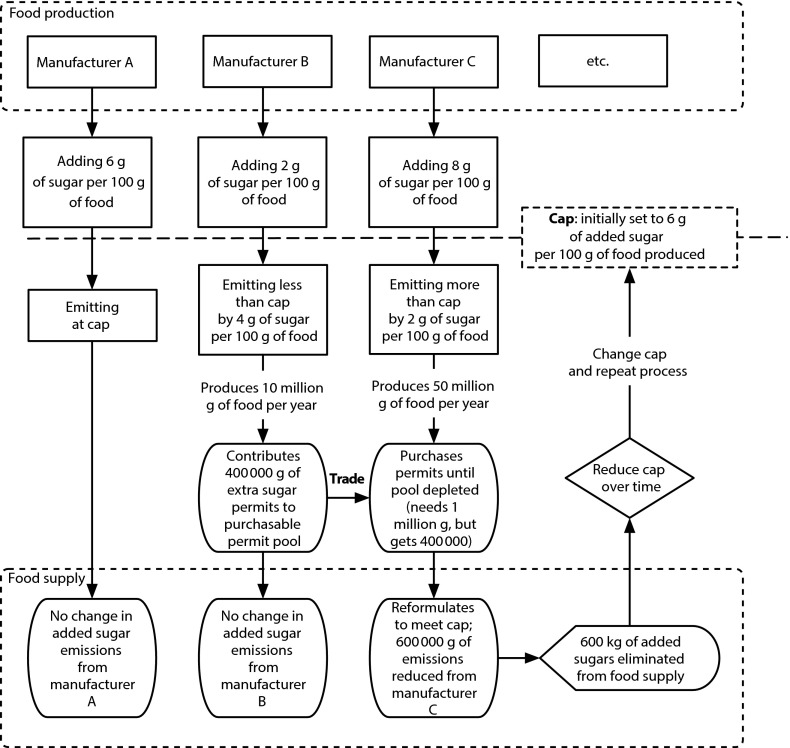FIGURE 1—
Model of a cap-and-trade system to reduce added sugars in the US food supply.
Note. Manufacturers “emit” added sugars into the food supply. Under a cap-and-trade system, a cap is set and gradually lowered each year. Manufacturers emitting less than their permitted cap can sell (for profit) their extra emissions permits to other manufacturers; manufacturers emitting more than their permitted cap can purchase their needed emissions permits until the pool of available permits is exhausted. In our model, manufacturers purchase permits in random order until the pool of permits is exhausted; they must then reformulate their products to meet the cap. Those manufacturers contributing to the pool (manufacturer B in this example) profit from the sales. The cap is reduced to 20% of baseline mean emissions at a linear rate over 20 years.

